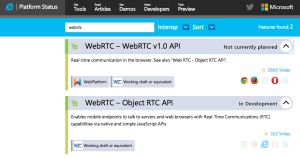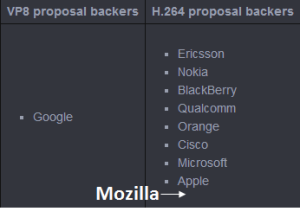As WebRTC has matured to a state where it’s first implementations are ready for companies to launch real services around it, the readiness of various companies to adopt WebRTC has fanned out quite a bit. Some are already charging ahead as early adopters, while others are playing it conservative. Of those in the conservative camp, one of the […]
What’s in a WebRTC JavaScript Library?
Looking over the past few years of WebRTC growth, and the landscape of emerging WebRTC solutions, we see quite a number of WebRTC-centric JavaScript (JS) libraries on the scene. Indeed, not long after browser vendors began shipping WebRTC implementations, a bouquet of WebRTC signaling libraries bloomed. Each delivers a JavaScript API surface in the browser, which provides […]
WebRTC Video Codec Debate: Is There No End in Sight? (Chris Wendt)
As detailed in previous posts on webrtcHacks, the Internet Engineering Task Force (IETF) has worked for the past few years to standardize the “on-the-wire” protocols that make up the WebRTC engine. It is coming up on 3 months since IETF 88 in Vancouver, where the IETF was to have settled the matter of a mandatory-to-implement […]
Trick or Treat? Cisco’s OpenH264.org & What it Means in the WebRTC Video Battle
We had a lot of traffic to Victor’s post on the WebRTC mandatory video codec earlier this week. Given the news from Cisco yesterday we figured this warranted a quick follow-up post beyond what we could add to the comments area. Quick debate recap Engineers don’t like lawyers, and as Victor mentioned in his post earlier […]
STUN the Network – How STUN helps WebRTC Traverse NATs
In my last post (a long time ago) I introduced the issue of NATs and Firewalls, and the tools WebRTC uses to overcome them. First off, my apologies for the lengthy hiatus after promising to continue the discussion of NAT/Firewall traversal. Since that entry, I became a Dad for the 2nd time, and lets just […]




